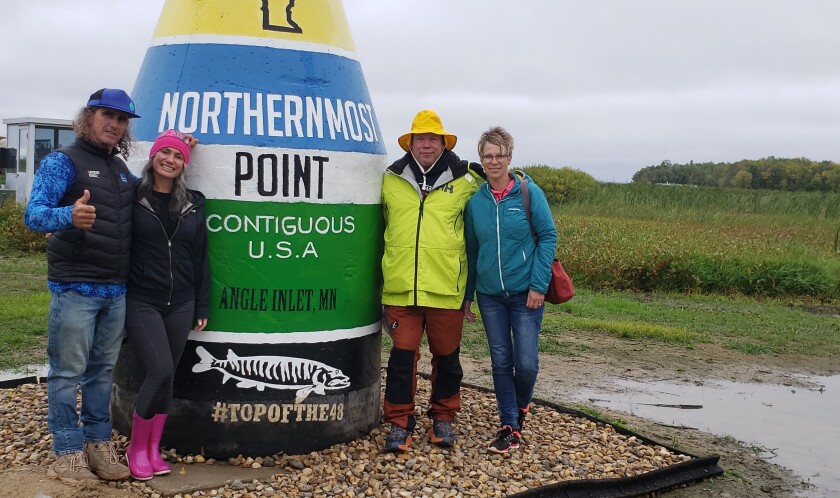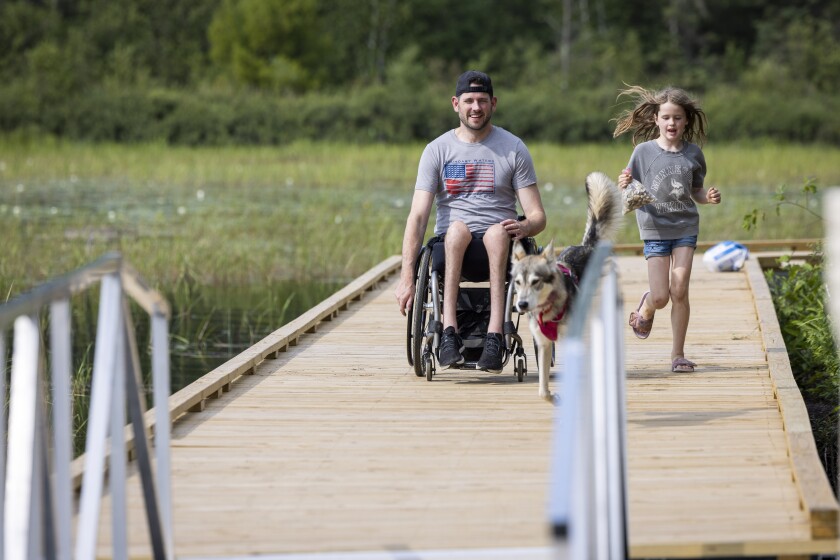PINGREE, N.D. – Visitors from all over the U.S. and internationally visit the Arrowwood National Wildlife Refuge for opportunities for birding, hunting and observing wildlife and prairie flowers and other recreational activities.
“Just this year, there are visitors from all corners of the country,” said Paul Halko, refuge manager at Arrowwood National Wildlife Refuge. “Our furthest visitors this year is we had two birders from Hungary that were traveling through and came and birded on the refuge. We will get international travelers pretty frequently throughout the year.”
ADVERTISEMENT
The Arrowwood National Wildlife Refuge, which is located about 31 miles north of Jamestown, protects large areas of mixed-grass prairie habitat for waterfowl, shorebirds, sharp-tailed grouse, white-tailed deer, dozens of species of butterflies and many other forms of wildlife, according to its website. The website states much of the refuge is grassland hills and prairie but the James River transects the area, forming a series of lakes.
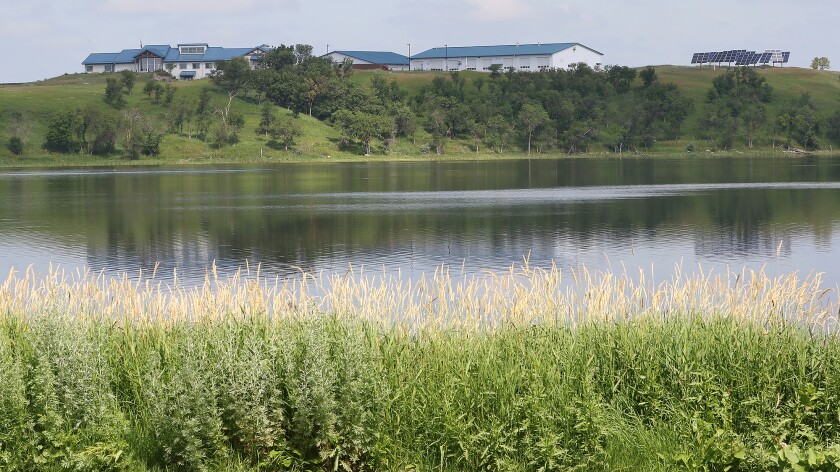
“It has a lot to offer for a wide variety of users,” Halko said. “The birding opportunities and just the general wildlife observation opportunities are probably the top attraction. We have all kinds of opportunities for photography as well.”
Jamestown Tourism Executive Director Searle Swedlund said the refuge provides the right tools for visitors to see as many birds as they can during a certain time limit.
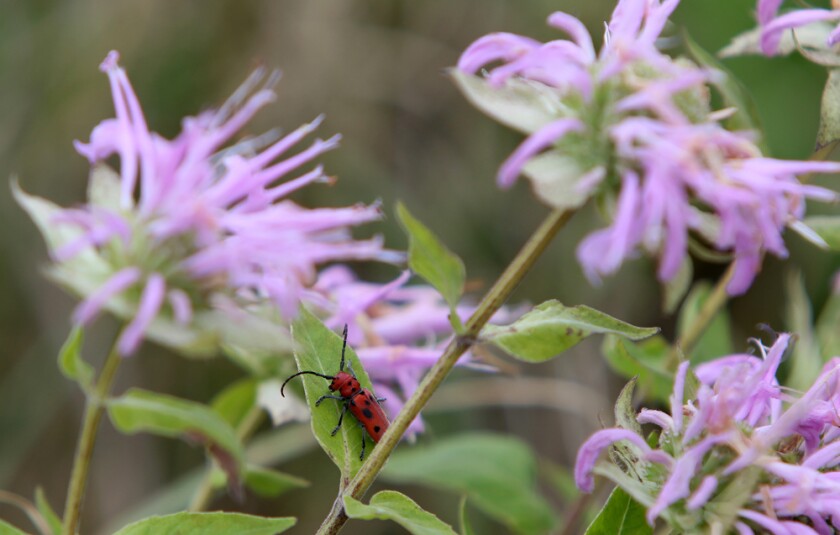
“The expertise and customer service out there and their willingness to interact with visitors is second to none,” he said.
Arrowwood National Wildlife Refuge is just shy of 16,000 acres and visitors can check out the site by going on the “extremely popular” auto tour, he said. The auto tour also has an elevated observation deck, and visitors can get out and walk or just stay in their vehicles and drive on the 4 1/2-mile loop that was just opened the first week of July. He said the loop was closed earlier this year because of flooding.

He said Arrowwood also has a 9-mile national recreation trail called the Leg of the Historic Fort Totten Trail where visitors can hike, bike or go horseback riding to observe wildlife.
The refuge also offers boating, canoeing and kayaking opportunities as well. Water bodies on the refuge include Arrowwood, Jim and Mud lakes and the James River.
ADVERTISEMENT
Halko said boats with a maximum of 25-horsepower motors are allowed. The refuge is closed to all boating from April 1-30 and Oct. 1 to March 31.
The refuge has a visitor center that was built in 2011 that includes different displays on the refuge system, habitat management and the wildlife species on the refuge. The visitor center is open from 8 a.m. to 4 p.m. Monday through Friday.
“It’s gorgeous,” Swedlund said.
Observation opportunities
Birding is a popular activity on the refuge, Halko said. He said 295 species of birds have been documented at Arrowwood but only 133 are known to nest on the refuge.
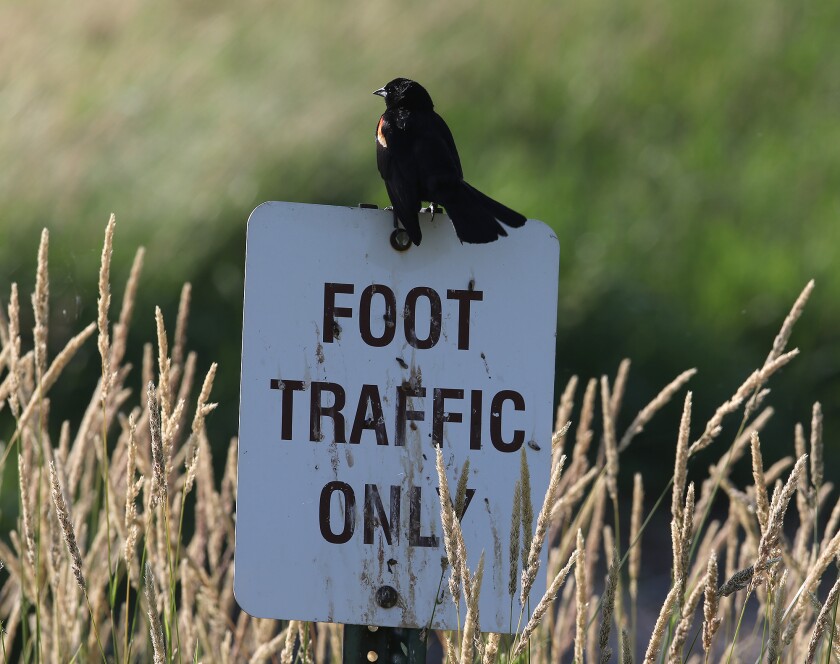
The Warbler Woodland Watchable Wildlife Area, which is located on the southeast side of Arrowwood Lake, is a good location to observe and take photos of wildlife, Halko said.
“In the spring, that is a great location to be on the refuge for migrating warblers,” he said. “It’s a popular spot for that. It is just a really nice area to just go and relax and take it in.”
He said the area has picnic tables in a wooded lake-like setting and serves as a location to park vehicles and unload horses.
ADVERTISEMENT
“If people wanted to launch their kayaks or canoes from there, that’s the place to do it,” he said.
Every season offers different viewing opportunities. Currently, it is the migration season for shorebirds, Halko said.
Visitors can also observe different species of waterfowl such as puddle ducks, diving ducks and geese. He said geese can be seen during the migration seasons in the spring and fall.

The sharp-tailed grouse viewing blinds are very popular on the refuge, he said. He said visitors can reserve viewing blinds called leks, which are the dancing or display grounds for the sharp-tailed grouse, and set them up prior to sunrise.
“Then the grouse basically come to the lek to display in the spring, and it’s part of their breeding ritual,” he said. “Folks come from all over the state and typically adjacent states to utilize those blinds in the spring. That takes place in April and May.”
Swedlund said a volunteer group called Birding Drives Dakota in conjunction with the refuge has done a “remarkable” job of defining the elements that are important to birding. He said there are brochures that include what types of birds can be seen or heard and signage on rural roads as well.
“This brochure and signage allows birders to quickly navigate the habitat,” he said. “If you have habitats, usually birds come with that.”
ADVERTISEMENT
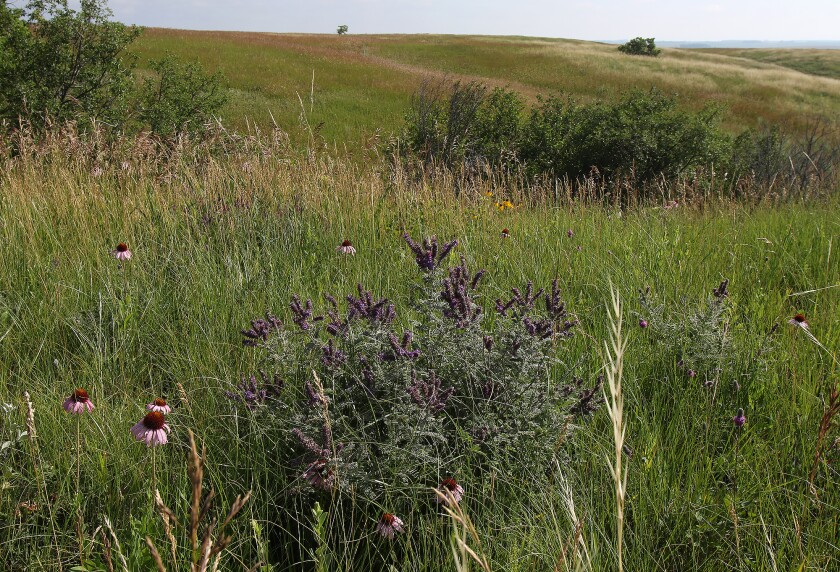
Visitors also enjoy observing the prairie flowers, which the peak bloom for most flowers is in July, Halko said.
“We have in our native prairie landscapes but then we also have large fields of prairie reconstruction that have numerous flower species in them and folks will come out just to see them or take photographs of them,” he said.
Hunting, fishing opportunities
The refuge is open to deer hunting in the fall, Halko said. It’s open during the youth, archery and rifle season.
“Deer hunting definitely attracts people,” he said. ‘It is a well-known location for deer hunting.”
The auto tour loop is closed during the deer youth and rifle seasons.
After deer season, the refuge is open to upland game hunting upland birds, sharptail grouse and pheasants.
ADVERTISEMENT

Although the refuge has lakes and the James River, Halko said the refuge is referred to as an opportunistic fishery.
“What that means is there is a fish barrier that prevents fish from entering the refuge from the Jamestown Reservoir,” he said. “Most of the time, that works. There are situations with flooding that the barrier will be ineffective so then fish can come into the refuge and provide fishing opportunities but it is not a consistent opportunity.”
He said the fish barrier helps keep rough fish such as carp out of the refuge.
“The purpose of the refuge is managing it for migrating birds, primarily waterfowl,” Halko said. “You typically want shallow water. Fish don’t survive in shallow water so when it comes to the game fish you want to prevent the game fish from getting in because they could end up dying in the shallow waters during the winter. At the same time, we want to keep the rough fish out so that you have the vegetation establishment in the refuge to benefit the migrating birds, primarily waterfowl.”









